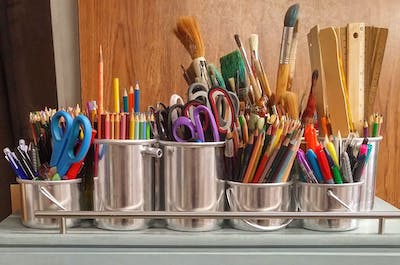Why Expressive Art Therapy for Kids and Teens
Why EXPRESSIVE ART THERAPY? The term expressive art refers to any combination of dance, writing, visual arts, drama, music or other creative outlets. Expressive art therapy is taking these modalities ...

What is Art & Expressive Therapy?
Art therapy techniques and expressive therapy encompass a variety of creative methods used by therapists to help individuals explore their emotions, thoughts, and experiences in a therapeutic setting. These techniques leverage the power of creative expression to promote healing, self-awareness, and personal growth. Here are some common art therapy and expressive therapy techniques:
These are just a few examples of the many art therapy and expressive therapy techniques available. Each approach is tailored to the individual’s unique needs and preferences, and therapists may combine different techniques to create a customized therapeutic experience.
Utilizing artistic methods to address psychological disorders and enhance mental well-being falls under the domain of art therapy. This therapeutic approach is grounded in the belief that creative expression can facilitate healing and promote mental health. Whether engaging in the act of creating art or appreciating the creations of others, individuals can utilize art to delve into their emotions, foster self-awareness, manage stress, bolster self-esteem, and refine social skills.
The incorporation of art into mental health treatment may seem unconventional at first glance. However, as an expressive medium, art serves as a powerful tool for clients to communicate, navigate stressors, and explore various facets of their personalities.
Art therapy amalgamates psychotherapeutic techniques with the creative process to enhance mental health and overall well-being. It offers an avenue for individuals to utilize art creation as a means of improving their mental, physical, and emotional wellness.
Various techniques are employed in art therapy, including drawing, painting, coloring, sculpting, or collage. As clients engage in artistic expression, they can introspectively analyze their creations and their emotional impact. Through this exploration, individuals can uncover underlying themes and conflicts that may influence their thoughts, emotions, and behaviors.
Importantly, participation in art therapy does not necessitate artistic proficiency or innate talent. Individuals of all ages, including children, teenagers, and adults, can derive benefits from art therapy. Research indicates that the mere presence of art can contribute to mental health enhancement.
Art therapy is applied to address a broad spectrum of mental disorders and psychological distress, often complementing other psychotherapy techniques for comprehensive treatment.
Some situations in which art therapy may be utilized include:
Art therapy differs from a regular art class in that it is more about letting clients focus on their inner experience. In creating art, people are able to focus on their own perceptions, imagination, and feelings. Clients are encouraged to create art that expresses their inner world more than making something that is an expression of the outer world.
To embark on your journey with art and expressive therapies, please reach out to us via our contact form or by calling 561-408-1098. We offer both telehealth and in-person therapy sessions, ensuring flexibility and convenience to accommodate your preferences.
Why EXPRESSIVE ART THERAPY? The term expressive art refers to any combination of dance, writing, visual arts, drama, music or other creative outlets. Expressive art therapy is taking these modalities ...